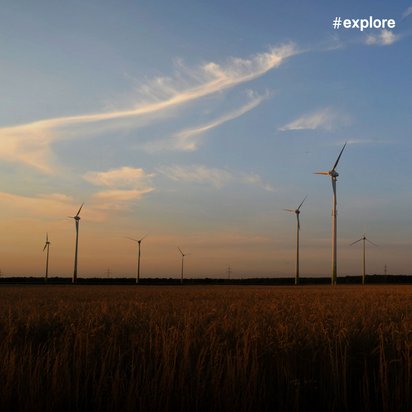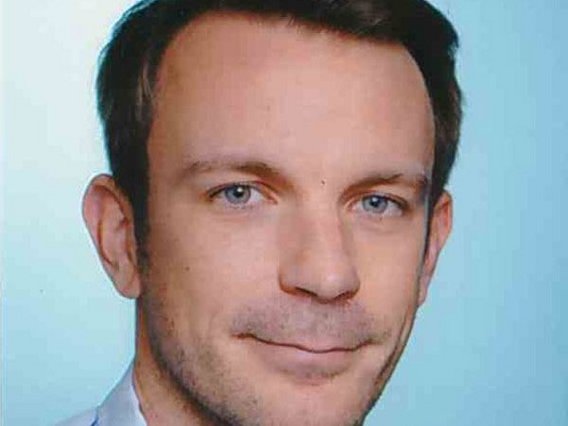Series of accidents
Wind energy: how safe wind turbines really are
No fewer than four wind turbines have snapped in two in recent weeks. Christian Hering explains that modern wind turbines are nonetheless generally safe.

Series of accidents
No fewer than four wind turbines have snapped in two in recent weeks. Christian Hering explains that modern wind turbines are nonetheless generally safe.

1 February 2017
Wind turbines provide clean energy for a sustainable energy future. Recently, however, four of the giant wind turbines have simply snapped like straws. Experts put the damage at several million Euro. Christian Hering, Specialist Manager Wind Energy of the TÜV NORD certification body, explains why modern wind turbines are still among the safest built structures in Germany.
It looks like a fallen giant: The wind turbine, weighing many tonnes, has keeled over and is lying on the field in a state of complete devastation. The installation with its huge rotor blades is so big and so robust that it is usually easily recognisable from a distance of many kilometres. Now that it is lying on the ground, however, the wind turbine suddenly appears small and fragile.
Images of this kind have been commonplace in the media in recent weeks: No fewer than four wind turbines have recently toppled over in Lower Saxony, Brandenburg, Saxony and Mecklenburg-Western Pomerania. Experts put the damage in each case at several million Euro; fortunately, none of the incidents has resulted in injury to people. This is an unusual series of accidents and has raised louder concerns regarding the safety of wind turbines.

Christian Hering is Head of Wind Energy at the TÜV NORD certification body. The former triathlete has worked here for 14 years in the field of wind energy.
The installations are subject to strict regulations and must satisfy the highest safety standards.
Christian Hering
Specialist Manager Wind Energy of the TÜV NORD certification body
Despite the accidents, modern wind turbines are fundamentally safe, says Christian Hering, Specialist Manager of Wind Certification at TÜV NORD: “The installations are subject to strict regulations and must satisfy the highest safety standards.” International comparison even reveals that the requirements for their design and subsequent testing are more stringent in Germany than elsewhere in the world. “The wind turbines are inspected by testing organisations at least every two years. If the operator has signed a maintenance contract with the manufacturer, then the installations must be tested every four years,” Hering continues. Exactly which testing cycle applies is determined by a directive of the Deutsches Institut für Bautechnik (DIBt).
As is the case with the TÜV tests for cars or lifts, all the component parts of wind turbines are inspected by experts for functionality, safety and defects. These include the tower, the foundations and the rotor blades along with the electrical systems and the mechanical engineering. “With modern wind turbines in mint condition we don’t see any elevated risk,” says Christian Hering.
WIND ENERGY - FACTS & FIGURES
The energy supply in Germany is becoming increasingly "greener". Wind power is the most important renewable energy source. It accounted for 12.3 per cent of gross electricity generation last year - more than any other renewable energy source.
By comparison, the share of photovoltaics is just under six per cent and there are now around 26,500 wind turbines in Germany. Their total installed capacity is around 42,000 megawatts (MW). Lower Saxony alone has a share of around 8,600 MW and thus leads the rankings - followed by the windy federal states of Schleswig-Holstein, Brandenburg, Saxony-Anhalt and North Rhine-Westphalia.
Wind power also creates jobs: The wind industry employs around 150,000 people.
Sources: German Wind Energy Association, as at December 2015; BMWI, as at December 2016
With modern wind turbines in mint condition we don’t see any elevated risk.
Christian Hering
Specialist Manager Wind Energy of the TÜV NORD certification body
This was by no means always the case. Twenty years ago, the safety standards were not as well developed as they are today. “For many authorities, the construction of new wind turbines was uncharted territory. In some cases, the requirements the turbines had to satisfy and possible effects on the structure weren’t yet known,” Christian Hering explains. The components of wind turbines are not designed to last forever; today's turbines are generally expected to last for 20 to 25 years - at which point they either need to be completely replaced by modern installations or rendered fit for continued operation by means of intensive inspections. Wear parts require earlier replacement.
Exactly why four wind turbines should have failed around the same time, Christian Hering can only speculate. Loose screws, fatigue of the bolts, or overspeed or breakages on the part of the rotor blades causing them to hit the tower - there are many possible reasons. Experts are now considering which components caused the accidents, and whether these need to be more precisely monitored in the future.
According to the German Wind Energy Association (BWE), six or seven such incidents take place each year on average. Measured against the 26,500-or-so installations in Germany, the number of accidents nationwide is very low: Only 0.03 percent of wind turbines are affected every year by catastrophic accidents of this kind.
None of the incidents resulted in injury to people.
This is an article from #explore. #explore is a digital journey of discovery into a world that is rapidly changing. Increasing connectivity, innovative technologies, and all-encompassing digitalization are creating new things and turning the familiar upside down. However, this also brings dangers and risks: #explore shows a safe path through the connected world.